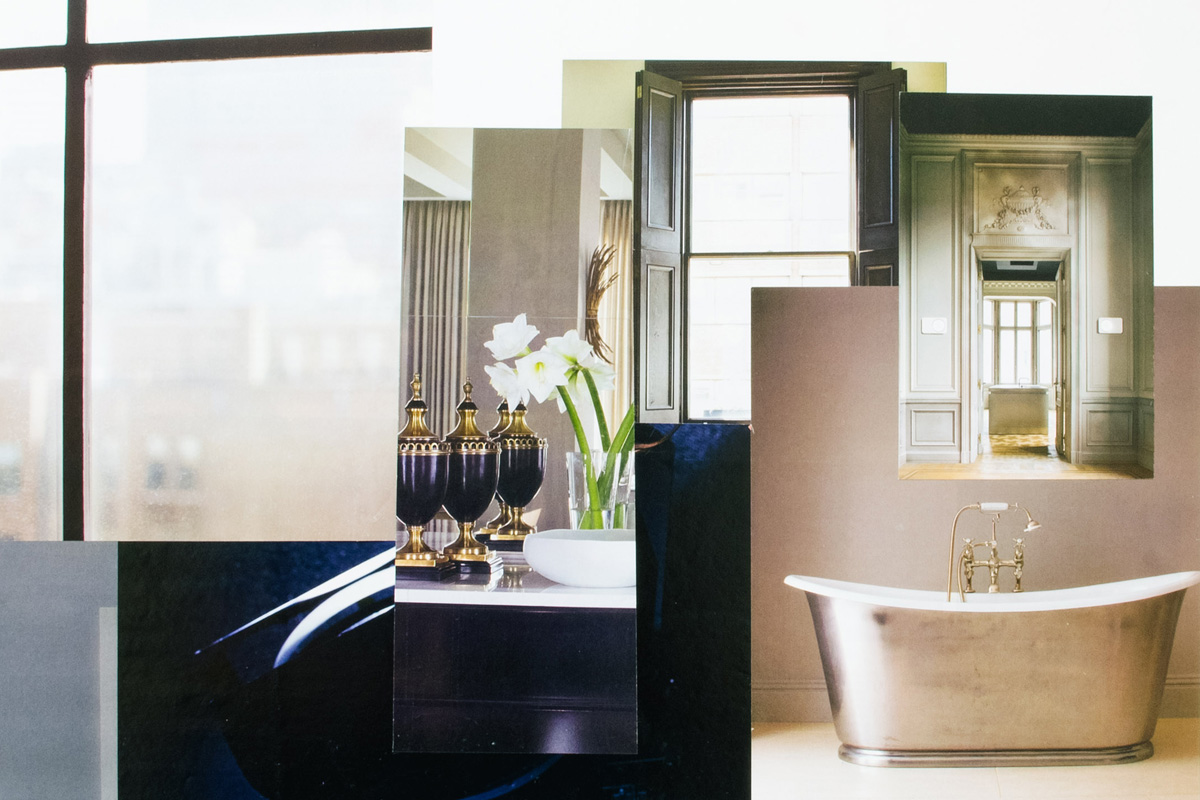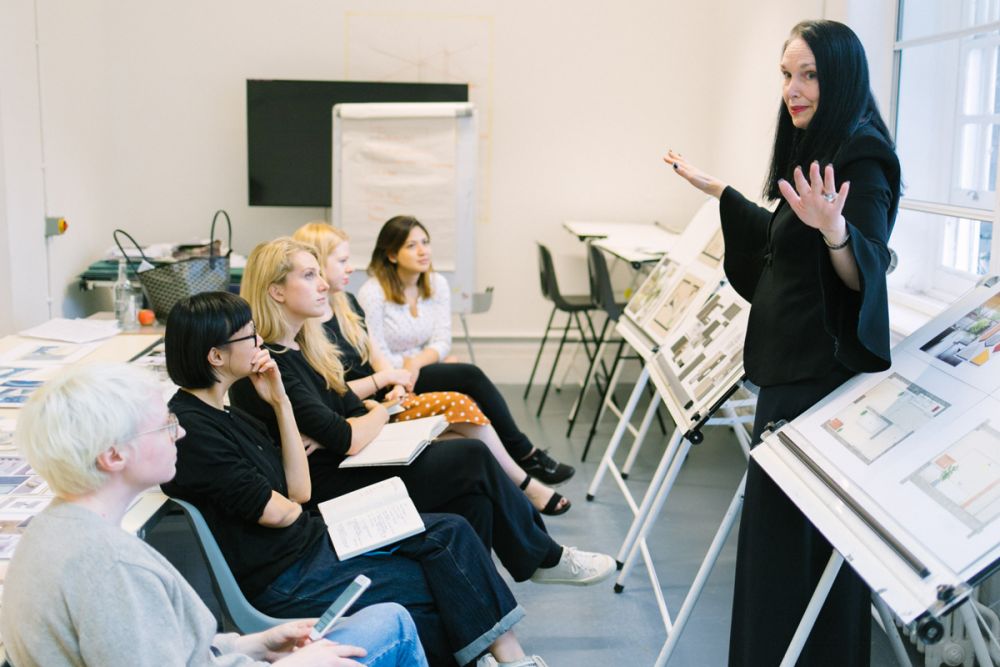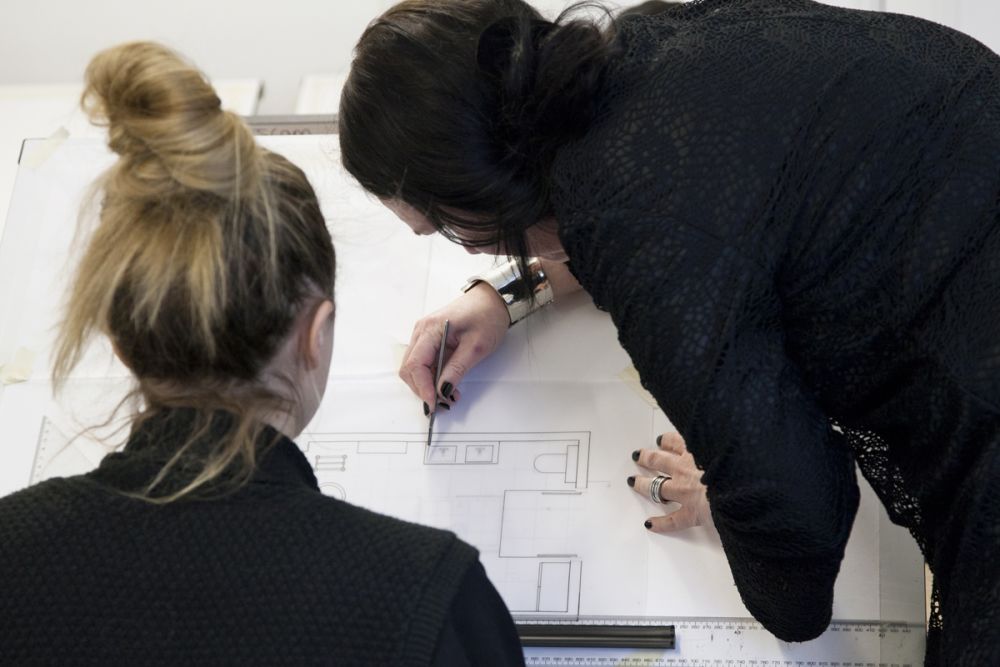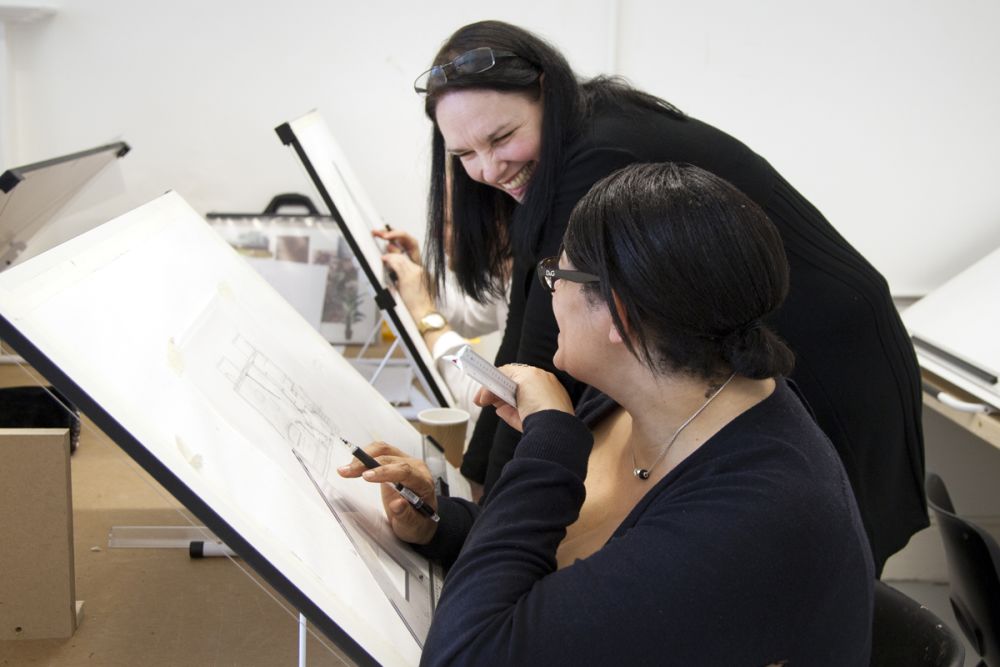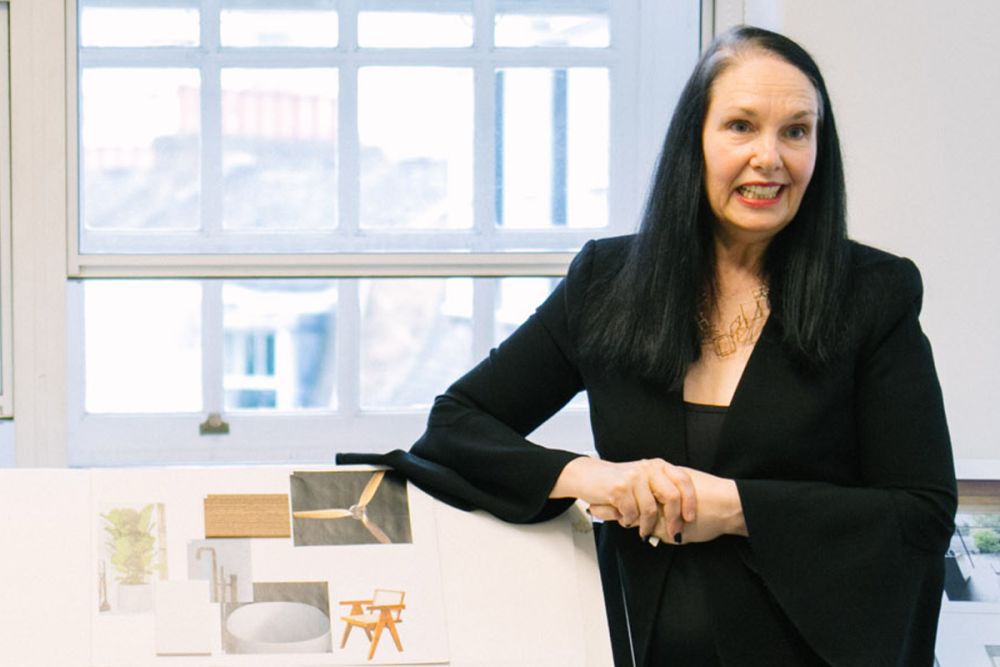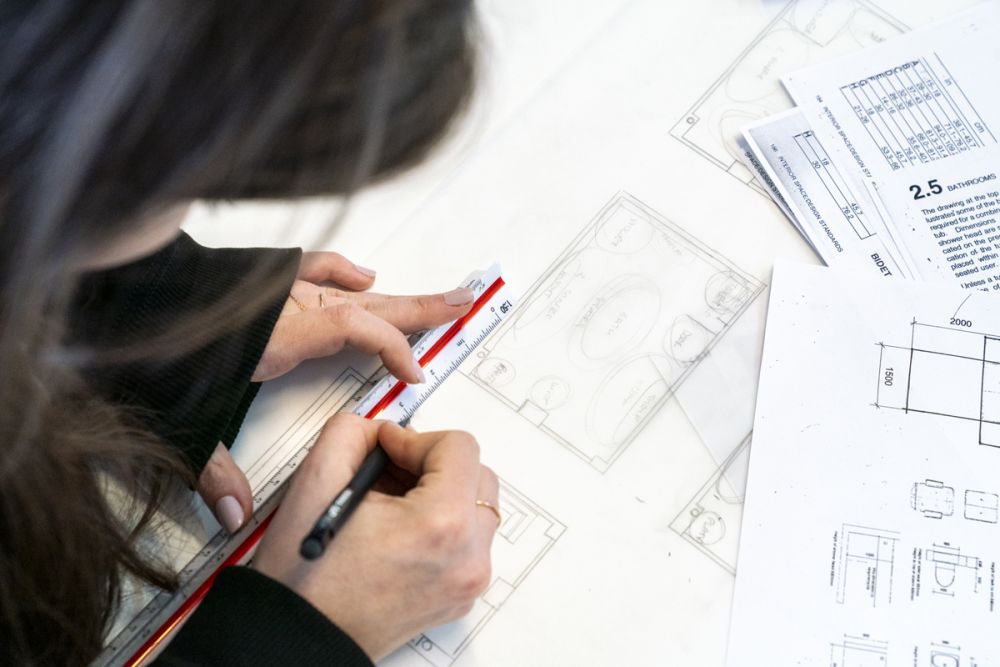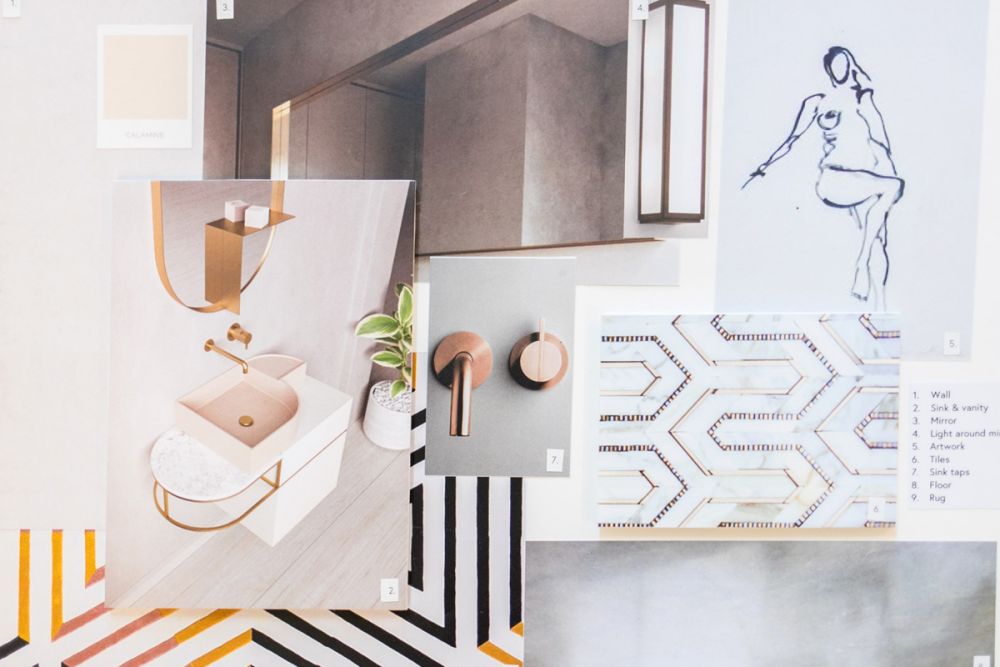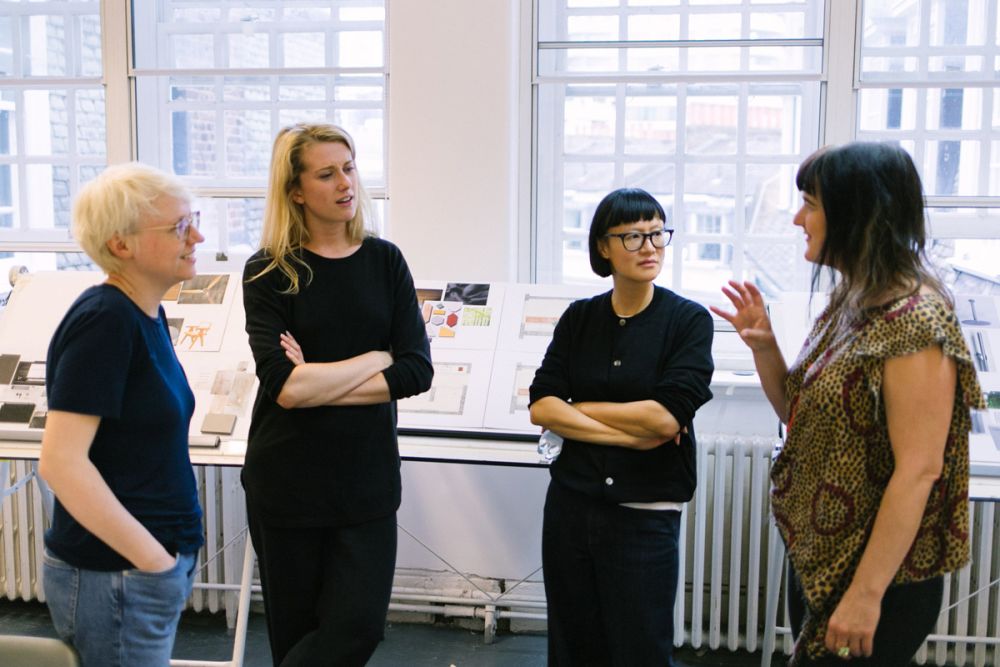Lyndall Fernie, is our lead tutor for interior design short courses at Chelsea College of Arts (UAL). In this Q&A Lyndall tells us about her background in interior design, the industry in general and shares her thoughts on how to become an interior designer. Lyndall then answers some quickfire questions on moodboards.
Tell us a bit about yourself and your path to interior design
I trained as a fashion designer and worked in Italy for a couple of years before returning to London where I worked for a record label, doing PR which was great fun. There was a lot of partying and taking journalists out for lunch. Looking after the artists for hair and make-up on tv, video and photography shoots .. but then I bought my first apartment and that was it! I was smitten… I went back to college at Chelsea and trained. I set up freelance straight out of college and quickly realised I needed some hands-on experience so I worked for a company, 3 days a week while still designing my own projects. Then I set up a partnership and opened a design/interiors shop in Islington working on projects around central London. Now I work as a freelance designer on high-end residential projects for both property developers and private clients.
How much experience do you need to enter the interior design industry?
Many people think that you need a BA to get into this field but that is not necessary. You need to know the skills required and this can be taught in a relatively short period. Approximately one year of study and hard work will be enough to get you a job in an interior design firm where you can learn the hands-on part of the job such as project management and dealing with clients. Actually, having experience in other work environments is a great benefit to becoming a designer. I feel that the older you are the more life experience you have and the better designer you will be.
Are there any specific personal attributes/qualities that are helpful, for becoming an interior designer?
You have to be able to visualise something before it has been created. Not everyone can do this and those that can take it for granted. You also have to be a good communicator and people who have great attention to detail do particularly well.
What key skills are necessary for having a successful career in interior design?
Spatial planning, detail drawing, lighting design, sourcing furniture and fabrics etc, CAD, photoshop, basic admin skills.
Is it necessary to have a degree in interior design to enter the industry or are there other pathways?
No, as I said earlier - it is good to have a degree but it does not have to be in interior design. You do need training but one year of study is enough if you are willing to work very hard to get there.
Are there any other qualifications that are beneficial for people to undertake?
A CAD course of some kind. Research which package is used in the country you intend to work in. In the UK many designers now use Vectorworks and AutoCAD. Is would be very useful to have a Prince2 project management qualification but that is not essential.
How important is it to have business/project management experience as an interior designer?
Not essential as companies will offer you an internship to learn these skills but if you already have them then you are more likely to get a job.
What practical tips/advice would you give to someone who is looking to make the transition into the interior design industry from another career?
You need the skills to get your foot in the door. It is not enough to get an internship and learn on the job. Employers need you to have the skills before they train you. So many students ask about internships too early. Until you have learnt the skills you will not be useful enough for a company. Interior Design - Module 1, 2 and 3 plus a CAD course will be enough if you work really hard and produce an excellent portfolio.
Would you give different advice to a graduate who studied something non-design related?
Not a problem at all. Many, many people come on the course from non-design backgrounds. You do not need to be artistic to do this but you do need to have a good eye for putting pieces together and a healthy love of shopping!
What are the common challenges you face in your day-to-day work?
Clients not realising how much work is involved In Designing an interior. Clients and contractors not realising the consequences of making changes, even small ones, to a design. Working with contractors can be challenging especially as a woman.
What is the most rewarding part of your job?
House warming parties!! They are amazing!!!! The whole evening of everyone telling you how fabulous your work is!!!! And also when clients are so, so happy with the final outcome. I have noticed that the less clients change my designs, the happier they tend to be.
In your opinion, what is the future for the interior design industry?
When I first started designing interiors it was mainly very wealthy people who employed a designer. Everyone else just muddled through. Nowadays interior design has become so much more accessible to everyone. Designers work with lots of different budgets and many more people employ designers. I think people are willing to spend more on their homes and are will to invest in getting it right.
With CAD technology getting more advanced there is a greater possibility that clients will find it easier to design their own spaces but only if they have time to do this.
Lyndall Fernie
Quickfire Questions: Moodboards
What is a moodboard and what is it comprised of?
A mood board is a collection of images that convey the feeling of the design ideas for the property without being too literal.
What is the importance of a moodboard?
It helps you and your client to agree on a visual concept rather than just a theoretical one.
When would you use a moodboard?
At the beginning of every job.
Do you always use a moodboard?
Yes if I am designing rather than just consulting.
Do designers still use moodboards in the digital age?
Not all designers use moodboards. It is down to the individual. Many would produce this digitally as it is easier to change the scale and crop images.
How can you express your brand with a moodboard?
It is not about expressing a brand. It is about producing a look that your client is happy with. Each client is different and so no two mood boards are the same.
Can you remember the first moodboard you created?
Yes, it was at college many years ago. It was for a bathroom that was grand and opulent. I loved doing it then and still, love it today.
How has this process evolved?
Previously, the majority of the images came from magazines, but this is very limiting. Nowadays, with access to so many online images, we are spoilt for choice with fabulous images that we can print out or use digitally.
How often do you reference the moodboard throughout a project?
Constantly. I need to make sure that I am keeping on track with what my client is expecting to see.
Interior Design at Chelsea College of Arts
Do you use any apps or tools for your moodboards?
Not really. I just use the cropping and scaling tool and just print out images to work with to produce my board.
Do clients present their own moodboards and how do you manage this?
I have had the client give me a magazine cutting in the past which was useful. Nowadays many of them have Pinterest boards with each room dived up so I can see what has been influencing them. I love this and it is so helpful.
Top tips for creating your moodboard?
The most important thing is to understand your client and what they want.
Can you show an example of a moodboard you have created?
As previously discussed, I would rather not as students just think that they have to copy my style.
5 things to think about when creating a moodboard?
Who your clients are and how do they want others to perceive them. Think about all the family members and make sure that their wants are also included. Is the mood you are creating practical for the lifestyle of the clients. Does the mood work with the building?
How can our courses help you apply mood boards?
Nearly every one of our interior design courses starts with a moodboard so it is a very important part of the process.
